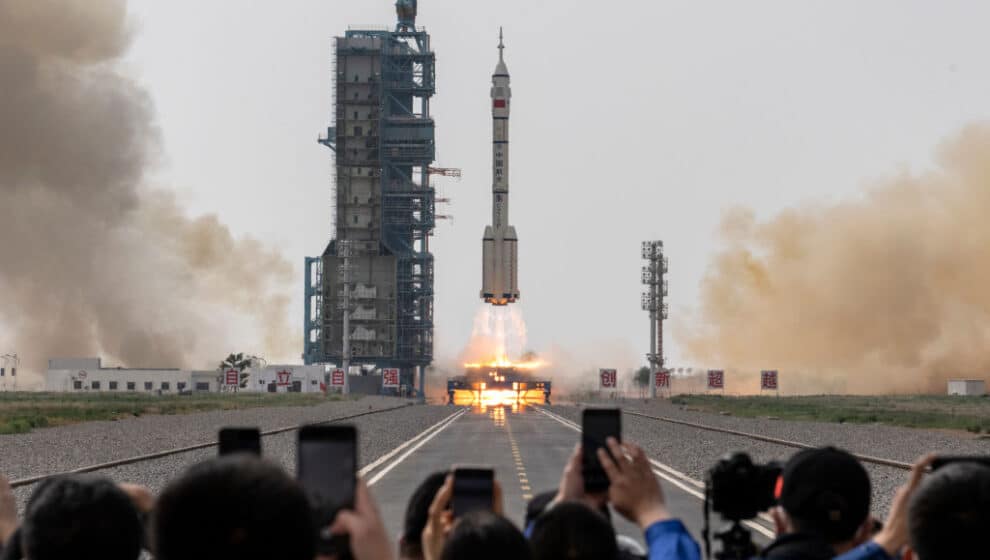The U.S. and China are starting a new space race to see which country can land humans on the moon first.
Key Details
- On Tuesday, the Chinese government celebrated the success of launching its first civilian astronaut into orbit.
- Beihang University Associate Professor Gui Haichao joined two fellow Chinese astronauts aboard Shenzhou-16 for a five-month mission on the Chinese Tiangong space station.
- The success followed Monday’s announcement from the China Manned Space Agency that the nation will attempt a manned moon landing before 2030.
- Its space agency successfully launched the Tiangong space station in April 2021 and has been slowly developing moon landing plans for years. It is developing lunar landers, rovers, and space suits for the mission.
- It also plans to test its Long March 10 rocket in 2027, placing a potential moon landing as early as 2028 or 2029.
Why It’s News
The Chinese government is framing the program as a rival to the U.S.-led Artemis Accords, which is drawing heavily on European space programs and private companies for support. NASA administrator Bill Nelson told Politico earlier this year that the U.S. faces direct challenges and national-security concerns in orbit from China and Russia’s space program. “It is a fact: we’re in a space race,” he says.
The U.S. is already well underway with its rival moon landing program. The Artemis Program saw its first successful launch last November with the successful launch of Artemis I, and it will receive support from private space companies like SpaceX, Boeing, and Blue Origin.
However, NASA’s current moonshot plans are facing logistical challenges. NASA is tentatively scheduled to launch Artemis II and Artemis III within two to three years, landing four Americans on the moon. Delays in the program could push the planned launch by as much as two to three years or longer.
In a recent meeting of NASA’s Advisory Committee for Human Spaceflight, Chief Operating Officer Jim Free stated that the Artemis Program is facing ballooning costs and budgetary issues, requiring a $41.5 billion budget through 2028. Budget issues could create further delays.
NASA has controversially planned to shift the Artemis Program in a more private direction, starting with Artemis IV in 2027, commissioning SpaceX to fly the mission’s crew to the moon aboard its new Starship heavy-lifting vehicle. This plan is currently dependent on the pace of SpaceX’s ability to successfully launch and operate Starship, which saw its first test launch on April 20 result in an explosion and failure. SpaceX has at least four years to complete and human-rate Starship to meet its deadline.
